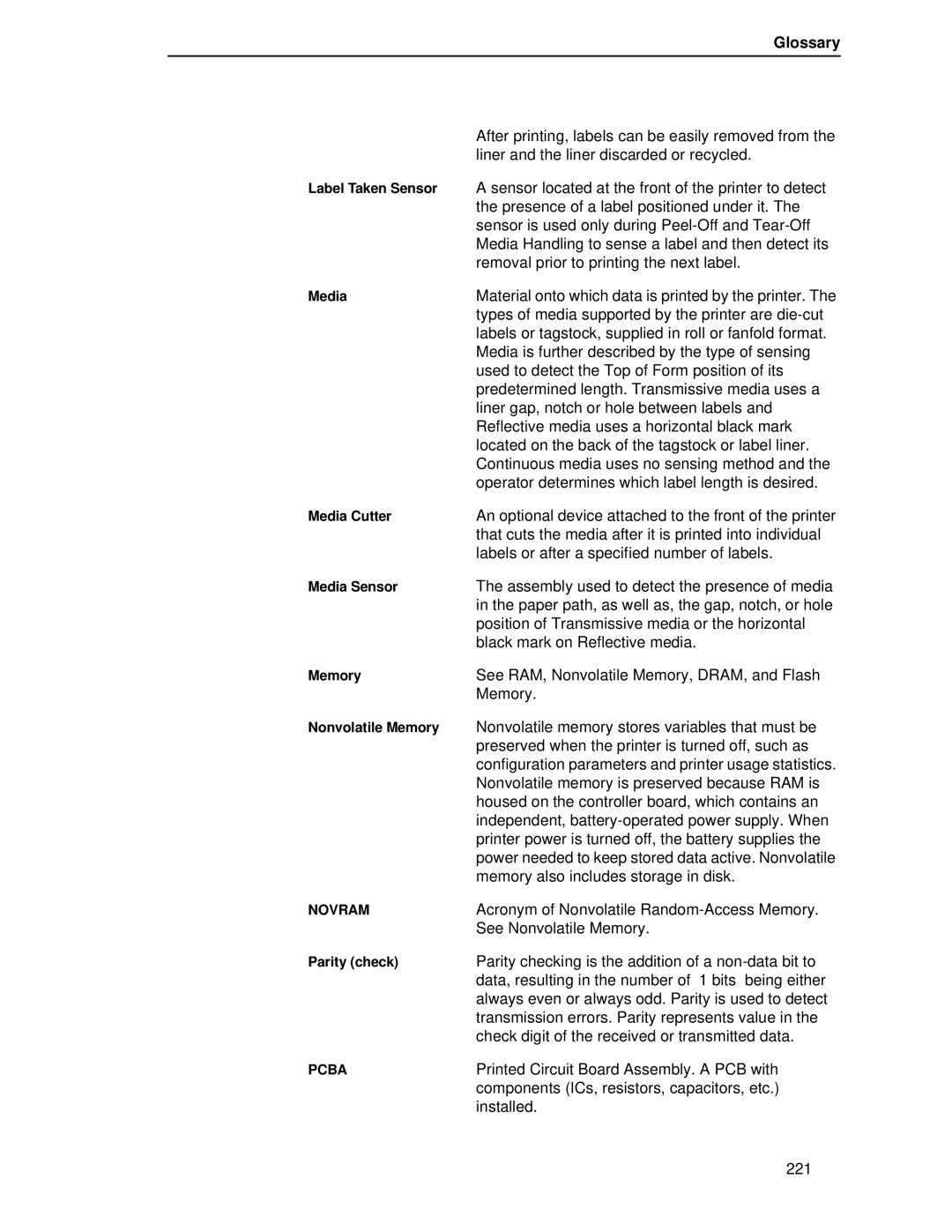Glossary
| After printing, labels can be easily removed from the |
| liner and the liner discarded or recycled. |
Label Taken Sensor | A sensor located at the front of the printer to detect |
| the presence of a label positioned under it. The |
| sensor is used only during |
| Media Handling to sense a label and then detect its |
| removal prior to printing the next label. |
Media | Material onto which data is printed by the printer. The |
| types of media supported by the printer are |
| labels or tagstock, supplied in roll or fanfold format. |
| Media is further described by the type of sensing |
| used to detect the Top of Form position of its |
| predetermined length. Transmissive media uses a |
| liner gap, notch or hole between labels and |
| Reflective media uses a horizontal black mark |
| located on the back of the tagstock or label liner. |
| Continuous media uses no sensing method and the |
| operator determines which label length is desired. |
Media Cutter | An optional device attached to the front of the printer |
| that cuts the media after it is printed into individual |
| labels or after a specified number of labels. |
Media Sensor | The assembly used to detect the presence of media |
| in the paper path, as well as, the gap, notch, or hole |
| position of Transmissive media or the horizontal |
| black mark on Reflective media. |
Memory | See RAM, Nonvolatile Memory, DRAM, and Flash |
| Memory. |
Nonvolatile Memory | Nonvolatile memory stores variables that must be |
| preserved when the printer is turned off, such as |
| configuration parameters and printer usage statistics. |
| Nonvolatile memory is preserved because RAM is |
| housed on the controller board, which contains an |
| independent, |
| printer power is turned off, the battery supplies the |
| power needed to keep stored data active. Nonvolatile |
| memory also includes storage in disk. |
NOVRAM | Acronym of Nonvolatile |
| See Nonvolatile Memory. |
Parity (check) | Parity checking is the addition of a |
| data, resulting in the number of “1 bits” being either |
| always even or always odd. Parity is used to detect |
| transmission errors. Parity represents value in the |
| check digit of the received or transmitted data. |
PCBA | Printed Circuit Board Assembly. A PCB with |
| components (ICs, resistors, capacitors, etc.) |
| installed. |
221
